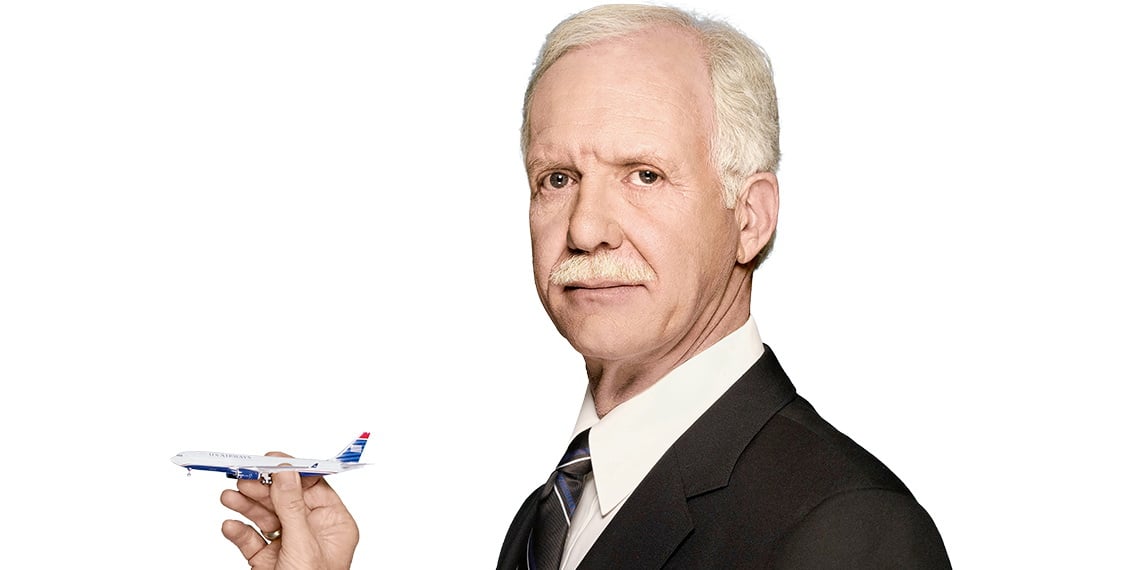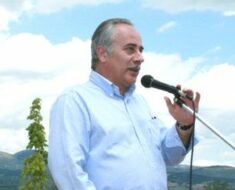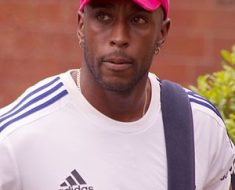
Sully Sullenberger net worth is $1.6 million. Also know about Sully Sullenberger bio, salary, height, age weight, relationship and more …
Sully Sullenberger Wiki Biography
Chesley Burnett Sullenberger III, better known in the media as Sully Sullenberger, was born on the 23rd January 1951, in Denison, Texas USA, and is a retired airline captain, certainly best recognized for saving 155 people on the 15th January 2009, when he landed a US Airbus A320 on the Hudson River in New York City, after the plane was disabled by striking a flock of Canada geese. He is now also known as a speaker on airline safety.
So, have you ever wondered how rich Sully Sullenberger is, as of early 2018? According to authoritative sources, it has been estimated that the total size of Sully’s net worth is over $1.6 million, accumulated through his successful career as an airline captain.
Sully Sullenberger was raised with a sister by his father, Chesley Burnett Sullenberger, who was a dentist, and his mother, Marjorie Pauline, who worked as a teacher in an elementary school. As a young boy, he built various models of aircrafts and planes, then when he was 12 years old, he became a member of Mensa International, reflecting his high IQ. He attended Denison High School, from which he matriculated in 1969, meantime at the age of 16, Sully learnt to fly an Aeronca 7DC with a local flight instructor, which definitely influenced his choice of career.
In 1969, he enrolled into the US Air Force Academy and by the end of the year became an instructor glider pilot. Four years later, he graduated with a B.S. degree and won the Outstanding Cadet in Airmanship award, as the class’s “top flyer”. Right after graduation, he was sent to Purdue University to continue his education, earning his MA degree in Industrial Psychology, before he joined the Undergraduate Pilot Training (UPT) at Columbus AFB, Mississippi. Thus, his career really began in 1973, as a fighter pilot in the US Air Force, staying in that position until 1980, flying Vietnam-era F-4 Phantom II jets. During his service, Sully became a flight leader as well as training officer, and reached the rank of captain, with a lot of experience at Nellis Air Force Base in Nevada, and in Europe and the Pacific. He also worked as a Blue Force Mission Commander in Red Flag Exercises. His service added considerably to his net worth.
From 1980 to 2010, Sully worked as a commercial pilot for Pacific Southwest Airlines (now US Airways), increasing his net worth by a large margin. Moreover, he worked as the Air Line Pilots Association safety chairman, an accident investigator and instructor. In 2007 he established Safety Reliability Methods, Inc. (SRM), serving as its CEO. However, Sully earned worldwide popularity in January of 2009, when he saved 155 lives by completing a faultless water landing of US Airbus A320 on the Hudson River, after the plane was disabled by striking a flock of Canada geese – not one person on board was injured.
Thanks to his courage, Sully was rewarded with numerous recognitions, including a Masters Medal by the Guild of Air Pilots and Air Navigators in 2009, the Medal of Valor by San Ramon Valley Fire Protection District, the Founders’ Medal by The Air League, among others.
To speak further, his memoir entitled “Highest Duty: My Search For What Really Matters” was published in 2009, and the 2016 film “Sully”, starring Tom Hanks in the title role and directed by Clint Eastwood, is based on the book. So, his net worth is certainly still rising.
Regarding to his personal life, Sully Sullenberger has been married to fitness instructor Lorrie Sullenberger since 1989; the couple has two daughters together. Their current residence is in the San Francisco Bay Area.
IMDB Wikipedia “Sully” (2016) $1.6 Million 1.83 m 1600000 1951-01-23 2016 23 January 1951 American American Spirit Award- Medal of Honor Gala – Congressional Medal of Honor recipients “In the Company of Heroes” Aviator CBS Evening News with Scott Pelley (2011) Chesley Burnett Sullenberger Jr. Clint Eastwood Daddy’s Home 2 (2017) Denison entary Horizon (1964) Katie Sullenberger Kelly Sullenberger Late Show with David Letterman (2009) Lorrie Sullenberger Mary Wilson NBC’s People of the Year (2009) Pauline Hanna Sullenberger Sully Sullenberger Sully: Sully Sullenberger – The Man Behind the Miracle (docum Texas USA Tom Hanks Untamed & Uncut: Mayhem and Miracles (2009)
Sully Sullenberger Quick Info
| Full Name | Chesley Sullenberger |
| Net Worth | $1.6 million |
| Date Of Birth | 23 January 1951 |
| Place Of Birth | Denison, Texas USA |
| Height | 1.83 m |
| Profession | Aviator |
| Education | University of Northern Colorado, United States Air Force Academy, Purdue University, Denison High School |
| Nationality | American |
| Spouse | Lorrie Sullenberger |
| Children | Kelly Sullenberger, Katie Sullenberger |
| Parents | Pauline Hanna Sullenberger, Chesley Burnett Sullenberger Jr. |
| Siblings | Mary Wilson |
| https://www.facebook.com/sully | |
| https://twitter.com/captsully | |
| https://www.instagram.com/captsully/ | |
| https://www.linkedin.com/in/sullysullenberger | |
| IMDB | https://www.imdb.com/name/nm3314810 |
| Awards | American Spirit Award- Medal of Honor Gala – Congressional Medal of Honor recipients “In the Company of Heroes” |
| Movies | Sully (2016), Daddy’s Home 2 (2017), Horizon (1964), Sully: Sully Sullenberger – The Man Behind the Miracle (documentary, 2016), |
| TV Shows | Late Show with David Letterman (2009), CBS Evening News with Scott Pelley (2011), NBC’s People of the Year (2009), Untamed & Uncut: Mayhem and Miracles (2009) |
Sully Sullenberger Trademarks
- Miracle on the Hudson
Sully Sullenberger Quotes
- [when asked, “When the birds struck, the engines stopped operating, is that correct?”] [deadpan] They certainly were not capable of producing usable thrust. [interviewed in Air & Space Smithsonian magazine, on Wednesday, February 18th, 2009. Interview was 34 days after successfully guiding and leading the falling US Airways Flight 1549 into the Hudson River on Thursday, January 15th, 2009]
- [when asked, “Did the airplane have a ditch button?”] Yes, it’s called a ditching push button. And there was not time. [interview in Air & Space Smithsonian magazine, on Wednesday, February 18th, 2009. Interview was 34 days after successfully guiding and leading the falling US Airways Flight 1549 into the Hudson River on Thursday, January 15th, 2009]
- I can remember at 5 years old knowing that I was going to fly airplanes. And I was just fortunate enough at every juncture to be able to get to the next goal. I’m not sure what I would have done had I not been able to fly. I never even considered anything else. [interview in Air & Space Smithsonian magazine, on Wednesday, February 18th, 2009. Interview was 34 days after successfully guiding and leading the falling US Airways Flight 1549 into the Hudson River on Thursday, January 15th, 2009]
- My view of the world is that people are best served when they find their passion early on, because we tend to be good at things we’re passionate about. I think we also need to find people whom we admire and try to emulate them. [interview in Air & Space Smithsonian magazine, on Wednesday, February 18th, 2009. Interview was 34 days after successfully guiding and leading the falling US Airways Flight 1549 into the Hudson River on Thursday, January 15th, 2009]
- My first flight instructor, L.T. Cook Jr., was a Civilian Pilot Training Program instructor during World War II, a real gentleman and a stick-and-rudder man. He was a crop-duster and had his own grass strip in rural Texas. In 1967, I paid $6 an hour for the airplane and gas and $3 an hour for his time. Among the thousands of cards I received [after the ditching], I discovered one from his widow. She wrote, “L.T. wouldn’t be surprised, but he certainly would be pleased and proud.” [interview in Air & Space Smithsonian magazine, on Wednesday, February 18th, 2009. Interview was 34 days after successfully guiding and leading the falling US Airways Flight 1549 into the Hudson River on Thursday, January 15th, 2009]
- I knew the altitude and airspeed were relatively low, so our total energy available was not great. I also knew we were headed away from LaGuardia, and I knew that to return to LaGuardia I would have to take into account the distance and the altitude necessary to make the turn back. In the case of Teterboro, I knew that was even farther away, even though we were headed in that direction. … Based on my experience and looking out the window, I could tell by the altitude and the descent rate that neither [airport] was a viable option. I also thought that I could not afford to choose wrongly. I could not afford to attempt to make it to a runway that, in fact, I could not make. Landing short, even by a little bit, can have catastrophic consequences, not only for everybody on the airplane, but for people on the ground. [interview in Air & Space Smithsonian, on Wednesday, February 18th, 2009. Interview was 34 days after successfully guiding and leading the falling US Airways Flight 1549 into the Hudson River, on Thursday, January 15th, 2009]
- Our descent rate was more rapid than usual because we had essentially no thrust. So in order to maintain a safe flying speed, we had to have the nose far enough down that we could hold that speed as we descended. Of course that resulted in a higher-than-normal rate of descent. [interview in Air & Space Smithsonian, on Wednesday, February 18th, 2009. Interview was 34 days after successfully guiding and leading the falling US Airways’ Flight 1549 into the Hudson River on Thursday, January 15th, 2009]
- Once we had established our plan, once we knew our only viable option was to land in the river, we knew we could make the landing. But a lot of things yet had to go right. [interview in Air & Space Smithsonian, on Wednesday, February 18th, 2009. Interview was 34 days after Thursday, January 15th, 2009’s successful guiding and leading the falling US Airways Flight 1549 into the Hudson Rriver on Thursday, January 15th, 2009]
- One of the big differences in flying heavy jets versus flying lighter, smaller aircraft is energy management – always knowing at any part of the flight what the most desirable flight path is, then trying to attain that in an elegant way with the minimum thrust, so that you never are too high or too low or too fast or too slow. I’ve always paid attention to that, and I think that more than anything else helped me. [interview in Air & Space Smithsonian, on Wednesday, February 18th, 2009. Interview was 34 days after successfully guiding and leading the falling US Airways Flight 1549 into the Hudson River on Thursday, January 15th, 2009]
- The way I describe this whole experience – and I haven’t had time to reflect on it sufficiently – is that everything I had done in my career had in some way been a preparation for that moment. There were probably some things that were more important than others or that applied more directly. But I felt like everything I’d done in some way contributed to the outcome – of course, along with [the actions of] my first officer and the flight attendant crew, the cooperative behavior of the passengers during the evacuation, and the prompt and efficient response of the first responders in New York. [interview in Air & Space Smithsonian, on Wednesday, February 18th, 2009. Interview was 34 days after successfully guiding and leading of the falling US Airways Flight 1549 into the Hudson River on Thursday, January 15th, 2009]
- [when asked about how the flight attendants helped, after he announced “Brace for impact”] I felt they were assisting me in that moment. Even though we were intensely focused and very busy, I remember thinking that as soon as I made the public address announcement in the cabin, within a second or two, I heard, even through the hardened cockpit door, the flight attendants in unison shouting their commands. “Heads down. Stay down.” And it was comforting to me to know that they were on the same page, that we were all acting in concert. It made me feel that my hope and my confidence in completing this plan was reasonable and that they knew what needed to be done and were doing their part. [interview in Air & Space Smithsonian, on Wednesday, February 18th, 2009. Interview was 34 days after successfully guiding and leading the falling US Airways Flight 1549 into the Hudson River on Thursday, January 15th, 2009]
- [asked whether it was standard procedure for the captain to go back through the cabin after an emergency] I felt that as more of a personal responsibility than a procedural responsibility – which it may be. But I had the time, the aircraft was stable, and I was not concerned that it would suddenly sink. And so I could leave absolutely no possibility of anyone being left behind. I made a thorough search, calling out, “Is anyone there?” to make sure the evacuation was complete, and it was. [interview in Air & Space Smithsonian, on Wednesday, February 18th, 2009. Interview was 34 days after successfully guiding and leading the falling US Airways Flight 1549 into the Hudson River on Thursday, January 15th, 2009]
- I would characterize the cockpit as being busy, businesslike, and our cooperation was done largely by observing the other and not communicating directly because of the extreme time pressure. [First officer] Jeff [Skiles] and I worked together seamlessly and very efficiently, very quickly, without directly verbalizing a lot of issues. We were observing the same things, we had the same perceptions, and it was clear to me that he was hearing what I was saying to Air Traffic Control on the radio. He was observing my actions, and I was observing his, and it was immediately obvious to me that his understanding of the situation was the same as mine, and that he was quickly and efficiently taking the steps to do his part. [interview in Air & Space Smithsonian, on Wednesday, February 18th, 2009. Interview was 34 days after successfully guiding and leading the falling US Airways Flight 1549 into the Hudson River on Thursday, January 15th, 2009]
- Most of the training that we get is for a situation where you have more time to deal with things. You have time to be more thoughtful, to analyze the situation. Typically what’s done these days is for the first officer to be the pilot flying and for the captain to be the pilot monitoring, analyzing and managing the situation. There wasn’t time for that. [interview in Air & Space Smithsonian, on Wednesday, February 18th, 2009. Interview was 34 days after successfully guiding and leading the falling US Airways Flight 1549 into the Hudson River on Thursday, January 15th, 2009]
- I felt it was like the best of both worlds. I could use my experience, I could look out the window and make a decision about where we were going to go, while he [the first officer] was continuing his effort to restart the engines and hoping that we wouldn’t have to land some place other than a runway. He was valiantly trying until the last moment to get the engines started again. [interview in Air & Space Smithsonian, on Wednesday, February 18th, 2009. Interview was 34 days after successfully guiding and leading the falling US Airways’ Flight 1549 into the Hudson River on Thursday, January 15th, 2009]
Sully Sullenberger Important Facts
- Former U.S. Air Force fighter pilot.
- Founder, Safety Reliability Methods, Inc.
- Became famous as a captain for US Airways after successfully ditching an Airbus A320 in the Hudson River on January 15, 2009. His aircraft hit a flock of geese after takeoff, damaging the engines and forcing him to land in the water. All passengers and crew survived.
- CBS News aviation and safety expert.
- Grand Marshal, Tournament of Roses parade.
- Graduated from Denison High School in 1969.
- His wife, Lorrie Sullenberger, is a fitness expert and television personality.
- Lives in Danville, California with his family [2009].
- Graduated from the University of Northern Colorado with a master’s in public administration.
- Graduated from Purdue University with a master’s in industrial psychology in 1973.
- Graduated from United States Air Force Academy with a B.S.
- Father, with Lorrie Sullenberger, of daughters Kate Sullenberger and Kelly Sullenberger.
Sully Sullenberger Filmography
| Title | Year | Status | Character | Role |
|---|---|---|---|---|
| Late Show with David Letterman | 2009 | TV Series | Elevator Expert #1 | Actor |
| Sully | 2016 | based on the book “Highest Duty” by – as Chesley ‘Sully’ Sullenberger | Writer | |
| Moment by Moment: Averting Disaster on the Hudson | 2016 | Video documentary short | Himself | Self |
| Sully: Neck Deep in the Hudson: – Shooting Sully | 2016 | Video documentary short | Himself | Self |
| Sully: Sully Sullenberger – The Man Behind the Miracle | 2016 | Video documentary short | Himself | Self |
| CBS This Morning | 2012-2016 | TV Series | Himself – CBS News Aviation and Safety Expert / Himself | Self |
| Jimmy Kimmel Live! | 2016 | TV Series | Himself – Guest | Self |
| The Late Show with Stephen Colbert | 2016 | TV Series | Himself | Self |
| WGN Morning News | 2016 | TV Series | Himself | Self |
| Good Morning America | 2016 | TV Series | Himself | Self |
| Entertainment Tonight | 2016 | TV Series | Himself | Self |
| Face the Nation | 2014-2016 | TV Series | Himself | Self |
| The Insider | 2015 | TV Series | Himself | Self |
| CNN NewsCenter | 2014 | TV Series documentary | Himself – Flight Expert | Self |
| CNN Newsroom | 2014 | TV Series | Himself – Flight Expert | Self |
| Newsnight | 2014 | TV Series | Himself – Interviewee | Self |
| Oprah: Where Are They Now? | 2013 | TV Series | Himself | Self |
| Fox and Friends | 2013 | TV Series | Himself | Self |
| Home & Family | 2013 | TV Series | Himself – Guest | Self |
| Horizon | 2013 | TV Series documentary | Himself – Aviation Safety Expert | Self |
| Tavis Smiley | 2012 | TV Series | Himself – Guest | Self |
| The Talk | 2012 | TV Series | Himself – Guest | Self |
| Surfing the Healthcare Tsunami: Bring Your Best Board | 2012 | TV Movie documentary | Himself | Self |
| The Early Show | 2011 | TV Series | Himself – Aviation and Safety Expert | Self |
| CBS Evening News with Scott Pelley | 2011 | TV Series | Himself – Aviation and Safety Expert | Self |
| Real Time with Bill Maher | 2011 | TV Series | Himself | Self |
| World’s Scariest Plane Landings | 2011 | TV Series documentary | Himself – Captain, Flight 1549 | Self |
| Brace for Impact: The Chesley B. Sullenberger Story | 2010 | TV Movie documentary | Himself | Self |
| Menschen, Bilder, Emotionen | 2009 | TV Series documentary | Himself | Self |
| Untamed & Uncut | 2009 | TV Series documentary | Himself | Self |
| NBC’s People of the Year | 2009 | TV Special | Himself | Self |
| The Tonight Show with Conan O’Brien | 2009 | TV Series | Himself | Self |
| The Daily Show | 2009 | TV Series | Himself | Self |
| Today | 2009 | TV Series | Himself | Self |
| Late Show with David Letterman | 2009 | TV Series | Himself – Guest | Self |
| NBC Nightly News with Lester Holt | 2009 | TV Series | Himself | Self |
| 60 Minutes | 2009 | TV Series documentary | Himself – Captain (segment “Saving Flight 1549”) | Self |
| Extra | 2009 | TV Series | Himself | Self |
| Fox and Friends | 2016 | TV Series | Himself | Archive Footage |
| When Vacations Attack | 2011 | TV Series | Himself | Archive Footage |
| Air Emergency | 2011 | TV Series documentary | Himself | Archive Footage |
| The Jay Leno Show | 2009 | TV Series | Himself | Archive Footage |
| Capitalism: A Love Story | 2009 | Documentary | Himself | Archive Footage |
| 60 Minutes | 2009 | TV Series documentary | Himself – Captain (segment “Saving Flight 1549”) | Archive Footage |
| Miracle of the Hudson Plane Crash | 2009 | TV Movie documentary | Himself – US Airways Flight 1549 Pilot | Archive Footage |
| Glenn Beck | 2009 | TV Series | Himself | Archive Footage |



